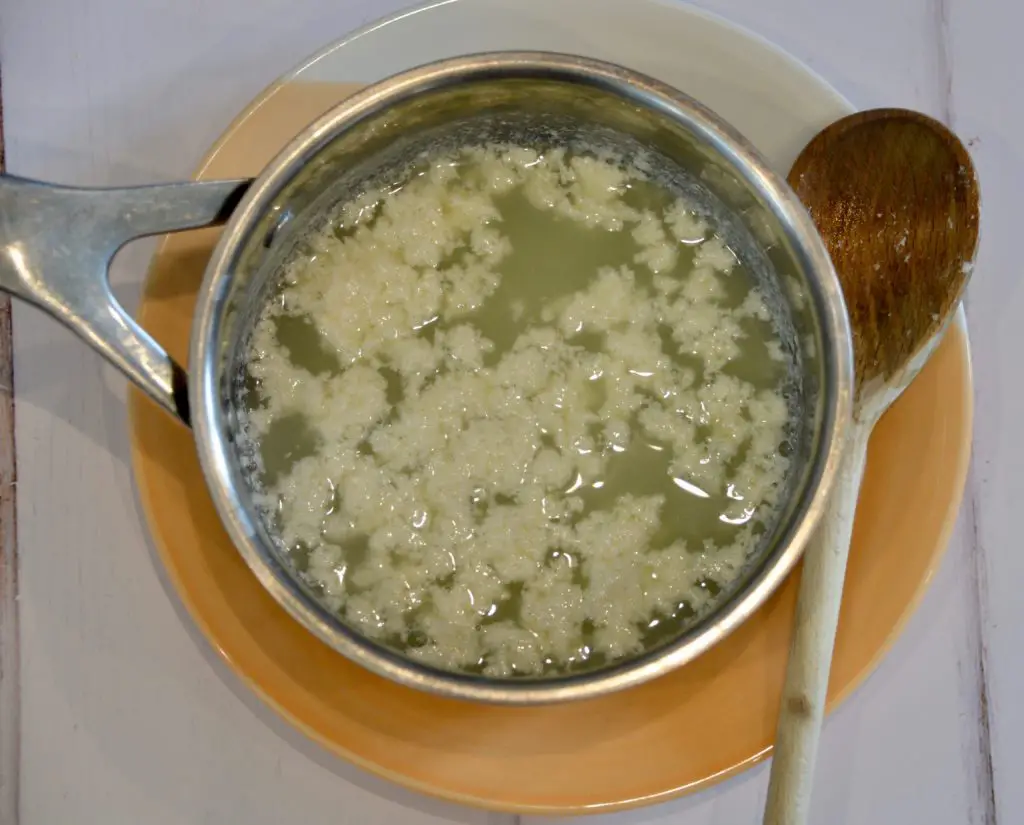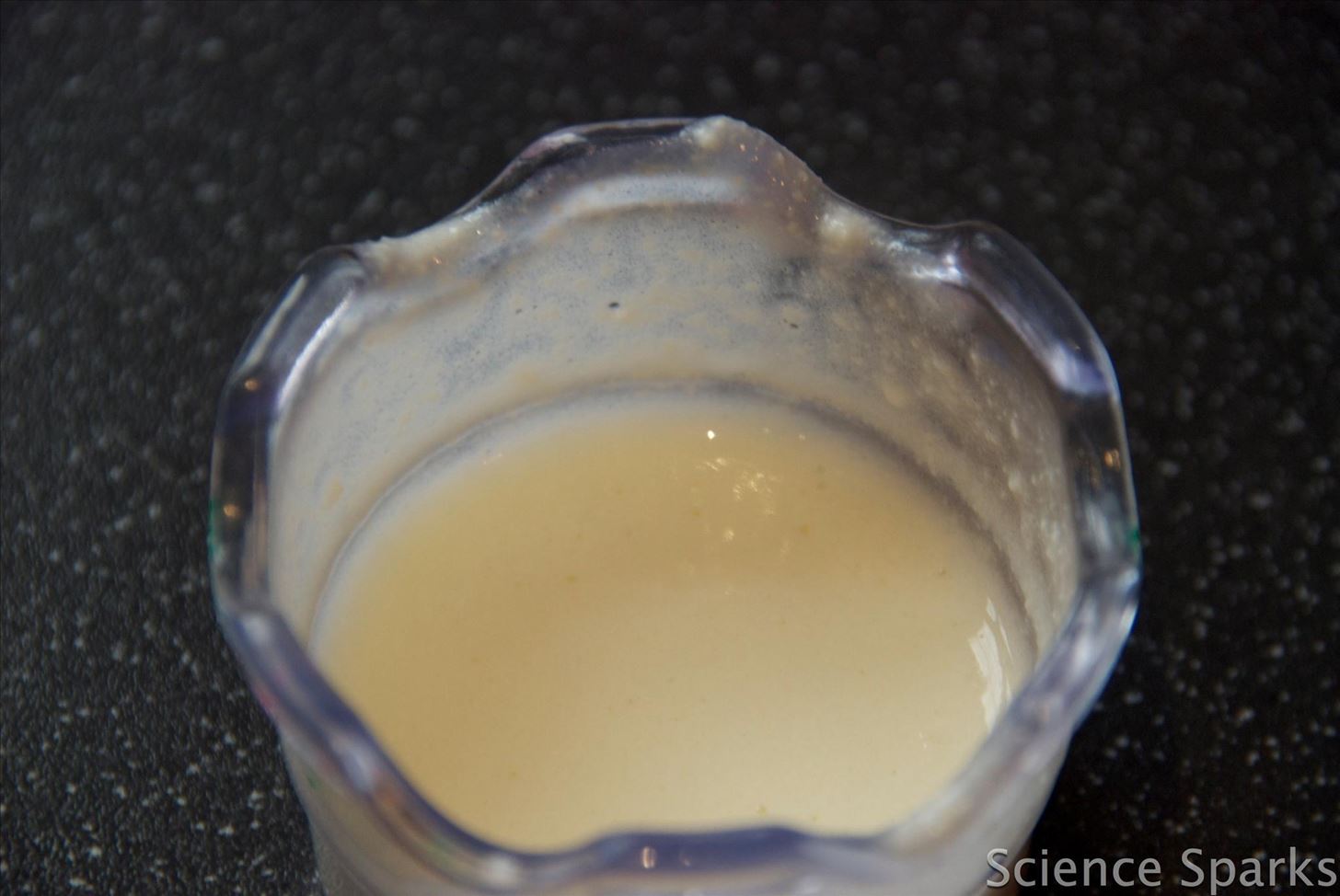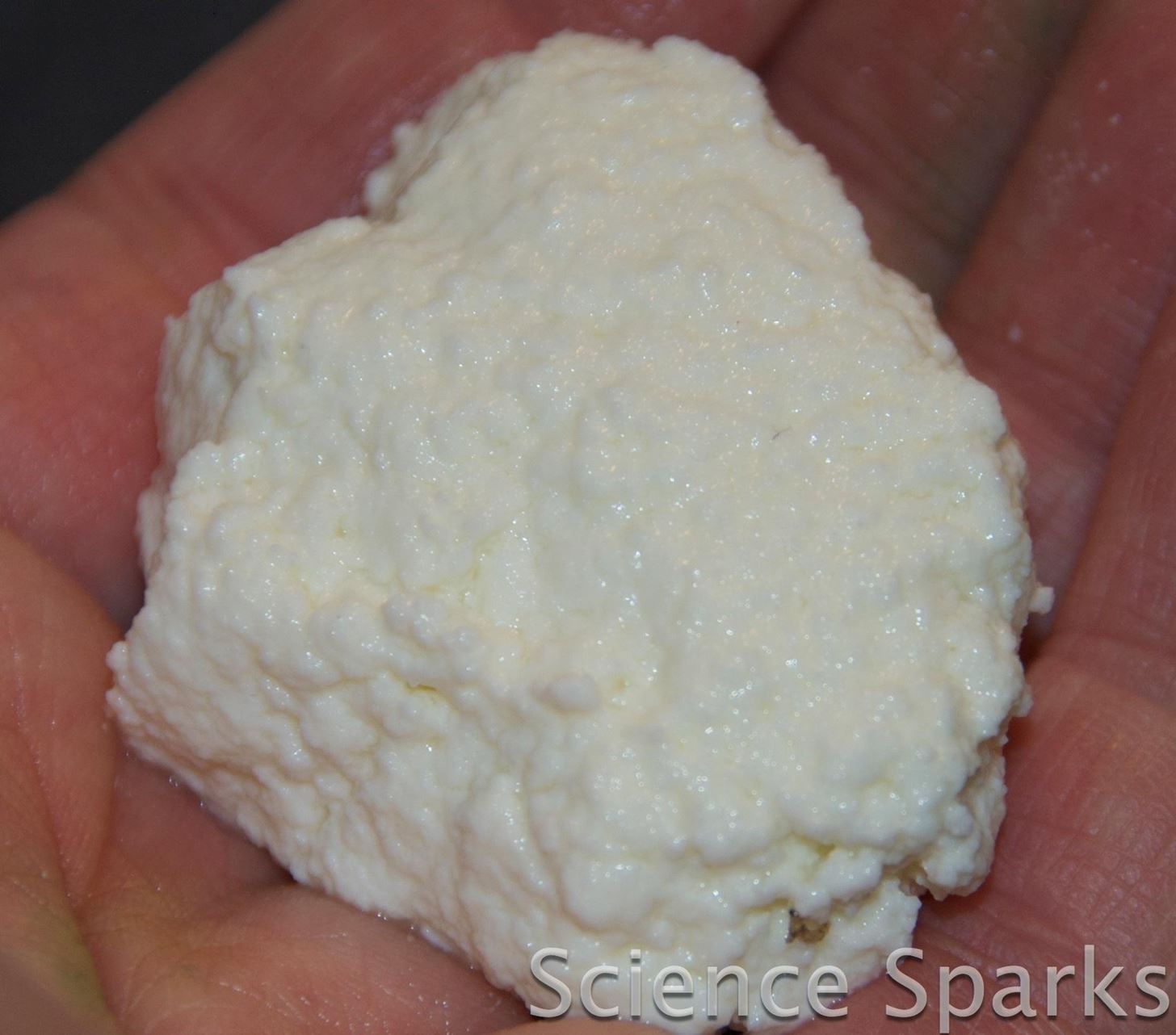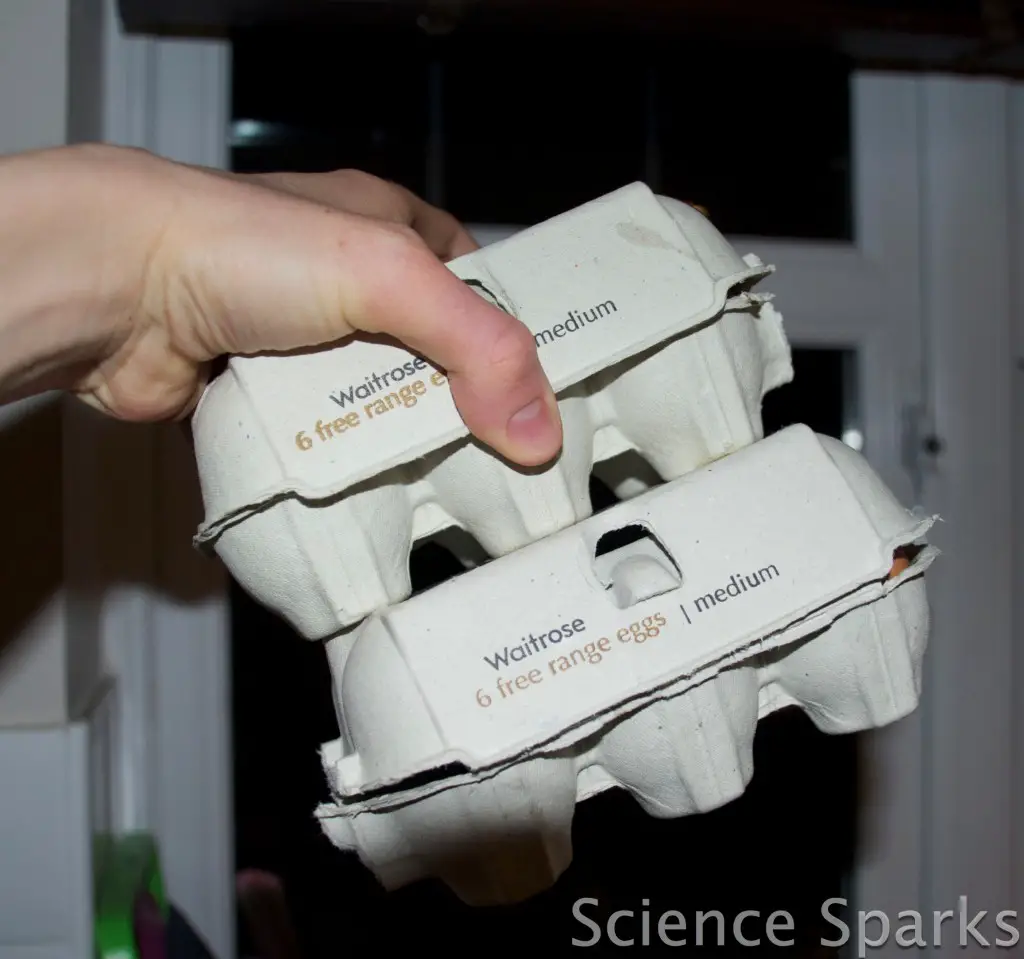Casein glue is a type of natural glue that is made from milk. It is a non-toxic and long-lasting adhesive that can be used to bond wood, paper, cardboard, and fabric. Here are the steps to make your own casein glue:
- Begin by heating a quart of skimmed or low-fat milk over low to medium heat.
- Once the milk is warm, add a tablespoon of white vinegar and stir with a spoon until the milk curdles and forms a thick liquid.
- Remove the mixture from the heat and strain it through a fine sieve or cheesecloth.
- Collect the liquid in a bowl, then add a teaspoon of salt to the liquid and mix until it is dissolved.
- Finally, pour the glue into an airtight container and let it sit for 24 hours. After that, your casein glue is ready to use!
How to make glue from milk

To make casein glue, you will need: skimmed milk, white vinegar, and a heat source. Begin by heating one cup of skimmed milk to just below boiling. Once the milk is heated, add three tablespoons of vinegar and stir the mixture until it thickens and curdles. When the mixture has cooled, strain it through a cheesecloth to remove any solid pieces. Once the glue has been strained, let it sit in the cloth for several hours.
This will allow the remaining liquid to drain away, leaving a thick paste. Once the paste has dried, scrape it off and it is ready to use as a glue. Casein glue is a great option for craft projects, repairs, and other activities. It is ideal for wood, paper, fabric, and other porous surfaces. Although it is water-resistant, it is not as strong as commercial glues. However, casein glue is a great choice for projects that don’t require a strong adhesive.
Can glue be made from milk?
All you need is milk, white vinegar, and baking soda. First, mix 1 cup of milk and 2 tablespoons of white vinegar in a bowl. This will cause the milk to curdle. Next, strain the curdled milk through cheesecloth to obtain the casein. Then mix 1 teaspoon of baking soda with 2 tablespoons of water in a separate bowl.
Finally, mix the casein and baking soda mixture together until it is thick and glue-like. Your homemade casein glue is now ready for use! It’s great for bonding wood, paper, fabric, and other materials. With just a few simple ingredients, you can make glue from milk!
Why does milk turn into glue?
Casein is a protein found in milk and it can be turned into glue by reacting with an acid. When the casein reacts with acid, it coagulates and forms a thick, sticky substance that can be used as an adhesive. The process of turning milk into glue is relatively simple. All you need is milk and an acid, such as vinegar or lemon juice. Heat the milk so that it just begins to boil and then add the acid.
The acid reacts with the proteins in the milk, causing them to coagulate or form a gel-like substance. This gelled substance is the glue that is created. Casein glue has been used for centuries to attach items together, such as in the manufacturing of furniture. It is a strong adhesive that can be used to fasten together a variety of different materials. The reason why milk turns into glue is because of the proteins present in it. When the acid is added to the heated milk, it interacts with the proteins, causing them to coagulate and form a gel. This gel is the casein glue. Casein glue is a great way to make a strong, natural adhesive. It’s simple to make and it’s great for a variety of tasks. With just a few ingredients, you can make your own casein glue and use it to attach materials together.
How strong is milk glue?
Once the glue has cooled, it can be used to bond wood, paper, fabric, and other materials together. It is extremely strong and can provide a reliable bond that is waterproof and heat resistant. Casein glue is also extremely versatile and can be used in a variety of applications; from furniture manufacturing to making models, it is a viable adhesive for any crafting or woodworking project. Additionally, it is non-toxic, making it safe for use in a variety of settings. In conclusion, casein glue, or milk glue, is an extremely strong adhesive that can be used in many different ways. It is non-toxic, waterproof, and heat resistant, and is able to provide a reliable bond for a variety of materials. With its impressive strength and versatility, casein glue is sure to be a great choice for any project.
What is the strongest homemade glue?
Casein glue is one of the strongest homemade glues around. It’s made from a combination of skimmed milk, vinegar, and baking soda. When combined and heated, the proteins in the milk interact with the acids in the vinegar to form a strong and durable glue. The glue can be used for a variety of projects, such as repairing furniture, attaching paper, and creating art pieces. It can also be used for laminating, creating model airplanes, and paper mache projects.
To make casein glue, the first step is to heat one cup of skimmed milk in a pot over medium to low heat. Once the milk is hot, add a tablespoon of vinegar, and stir until the milk curdles. Next, add a teaspoon of baking soda and stir. This creates a mixture that can then be poured onto a sheet of wax paper or parchment paper to cool. Once the glue cools, it can be used to attach objects together. The strength of the glue will depend on the amount of vinegar and baking soda used, with more resulting in a stronger bond. With the right mixture, casein glue can provide a strong and long-lasting bond. In addition to being strong, casein glue is also non-toxic, making it safe and suitable for projects involving children. It’s also water-resistant and can be used for a variety of materials, including wood, stone, ceramic, and paper. With the right ingredients and a few easy steps, you can make a reliable and durable homemade glue for any project.
How long does milk glue last?
This glue is made by separating the proteins in milk, then mixing it with an acid to form a glue-like substance. Once it is formed, the glue hardens quickly, and it can last for many years. When making casein glue, it’s important to make sure that the milk has gone sour, as this will help with the separation of proteins. The acid used can also affect the strength and longevity of the glue. For example, if a stronger solution is used, it can be more durable and longer-lasting.
When stored correctly, casein glue can last for many years. To ensure that your glue is still usable, it’s important to store it in a cool, dry place and away from direct sunlight. The glue should also be covered with an airtight lid to prevent it from drying out. Another factor to consider when making casein glue is that it doesn’t always hold up to long-term exposure to water and moisture. While it can be used outdoors, it’s best to use it indoors and in dry areas. Overall, casein glue is a great choice for a variety of projects, and it can last for many years when stored correctly. It is important to remember that the strength and longevity of the glue is affected by the acid used and the storage conditions, so it’s important to take these factors into consideration when making casein glue.
How long does milk glue take to dry?
To make your own casein glue, you will need milk, some form of acid, and a heat source. To begin, heat your milk to just above lukewarm, and slowly add the acid while stirring. Once the milk has thickened, remove it from the heat and let it cool. When the milk has cooled, you will have a thick, glue-like substance. This is casein glue.
You can apply it to whatever craft project you are working on and let it dry. How long does casein glue take to dry? The exact time will depend on several factors, such as the amount of glue applied, the temperature and humidity of the room, and the types of materials it is applied to. In most cases, however, casein glue will take around two to four hours to dry. Making casein glue is a great way to make a basic adhesive for your craft projects. The time it takes for the glue to dry will depend on the conditions around it, but generally it will take two to four hours.
How to turn milk into glue

To start, you will need milk, a bit of vinegar, and a container. Begin by pouring the milk into the container, and adding a few drops of vinegar at a time. Stir the mixture together, and let it sit for around 15 minutes. The longer you let it sit, the thicker the glue will become. Once the mixture has thickened, pour the glue into another container.
Use a spoon to scoop out the excess liquid, so that the glue is thick enough to use. If the glue is not thick enough, let it sit for longer. To finish, use a brush or a piece of paper to spread the glue over the surface that you want to stick together. The glue will start to dry in a few minutes, and you can use the item that was stuck together as soon as it has dried. By using milk, vinegar, and a few simple steps, you can easily make your own casein glue to create strong and lasting bonds between two surfaces.
How do you make powdered milk into glue?
Making casein glue from powdered milk is surprisingly simple. All you need is powdered milk and a small amount of vinegar or lemon juice. Begin by mixing one tablespoon of powdered milk with two tablespoons of vinegar or lemon juice. Stir the mixture until it becomes a thick paste. Once the paste has reached the desired consistency, leave it to sit for an hour or two so it can thicken further.
After the paste has thickened, you can use it as an adhesive. The casein glue can be used as a strong and reliable adhesive for wood, paper and fabric. It can also be used as a picture framing glue or to seal cracks in wood. Enjoy making your own casein glue from powdered milk!
How to make glue with milk

Making casein glue with milk is easy and inexpensive. All you need is milk and a few other common household items. To start, you need to heat up the milk in a saucepan on the stove. As the milk heats up, it will begin to thicken and separate. Once the milk has thickened, pour it into a bowl and let it cool.
As the milk cools, the proteins will form a thick, jelly-like substance known as casein. To make the glue, take the cooled casein and add a few drops of white vinegar and some liquid soap. Stir these ingredients together to create a paste. Your homemade glue is now ready to use. Try it out on paper and other items to see how strong it is. With a little practice, you can perfect your casein glue recipe and make some really strong adhesive.
How do you make your own glue for glue sticks?
Making your own glue for glue sticks is easy and rewarding with casein glue. To make your own glue, you will need casein powder and some warm water. Begin by mixing the casein powder with a small amount of warm water in a container and stirring it until it forms a paste. Keep adding more water and stirring until the paste is smooth and lump-free. Once the paste is ready, you can put it into a glue stick container and let it cool.
Once cooled, your casein glue will be ready to use in your glue sticks. The glue should last for several months if stored in a cool, dry place. It is a great way to make your own glue for arts and craft projects and can help you save money in the long run.
What happens if milk glue does not have the correct consistency?
Making casein glue requires the correct consistency of milk glue. If not, it can cause several different issues. Firstly, it won’t be as adhesive as it should be; if the consistency is too thick, it won’t stick as well as it should, and if it’s too thin, it won’t hold together as strongly. Secondly, if the milk glue has the wrong consistency, it can also cause the glue to take too long to dry, or dry too quickly. This could negatively affect the end result, as it won’t be able to be used when needed.
Thirdly, it can also be more difficult to work with; if the consistency is off, it can become difficult to spread the glue in the desired manner. Therefore, it’s important to make sure that the milk glue has the correct consistency when making casein glue. If not, it can lead to various issues that can negatively impact the end result.
How do you make glue with flour and water?
The process of making it is simple and you only need a few basic ingredients. To make casein glue, start by mixing together equal parts of flour and water in a bowl. Stir the mixture thoroughly until it forms a thick paste. Once the paste is ready, add a few drops of white vinegar and stir the mixture again until it is evenly combined. Finally, cook the mixture on medium heat for about 10 minutes, stirring frequently. When it is done, the glue should be a smooth and glossy paste. Once the glue has cooled to room temperature, it will be ready to use.
How to make homemade glue from milk

To start, heat one cup of milk in a pot until it reaches a low boil. Next, add two tablespoons of white vinegar and mix. The heat will cause the milk to separate into solids and whey. Remove the pot from the heat and strain the mixture into a bowl with a fine mesh strainer, separating the solids from the whey. Discard the whey, but save the solids.
Place the solids in a food processor and puree until smooth. Then, pour the resulting glue into a jar with a lid and store in a cool, dry area. You can now use your homemade casein glue for crafts, hobbies, and other DIY projects.
Can you make glue from milk?
To make casein glue, you will need milk, white vinegar, and a pot. First, heat the milk in the pot, stirring occasionally. Once the milk has reached a boil, add the vinegar and continue stirring. The combination of milk and vinegar will cause the milk proteins to curdle, forming a thick paste. Next, pour the curdled milk into a cheesecloth-lined strainer and let it sit for a few hours.
This will allow the whey to drip out, and the remaining proteins will form a solid mass. The solid mass is the casein glue. The glue can then be scraped off and dried. Once it is dry, it will be ready to use as an adhesive. Casein glue is a great option for many crafts and tasks, as it is quite a strong adhesive. It is also easy to make and can be used as a more natural alternative to traditional store-bought glues.
How to make homemade glue with skim milk?
To begin with, you will need skimmed milk, vinegar and a mixing bowl. First, pour the skimmed milk into the mixing bowl and stir it until it is smooth. Then, add a few drops of vinegar to the mixture and stir until it is completely mixed in. The chemical reaction between the vinegar and the milk proteins is what causes the glue to form. You may need to add a little more vinegar or milk to get the consistency you want for your glue.
Once your glue is at the desired consistency, you can use it like any other store bought glue. You can use it to glue paper, wood, fabric and many other materials. If you decide to use casein glue made with skim milk, make sure to store it in a cool and dry place. This will help keep it from spoiling and will extend the lifetime of your glue.
How to make homemade homemade glue?
To make your own casein glue, you will need a few simple ingredients: white vinegar, baking soda, and powdered casein. Begin by adding one cup of white vinegar to a saucepan. Heat the vinegar until it reaches a gentle simmer, then add one teaspoon of baking soda and stir until it is dissolved. Next, add one-quarter cup of powdered casein and stir until it is completely dissolved. Continue heating the mixture and stirring until it has thickened.
Remove the casein glue from the heat and let it cool before storing it in an airtight container. Your homemade glue is now ready to use! It will work just as well as store-bought glue at a fraction of the cost, and it is safe for use with children. Enjoy your homemade casein glue!
What is the best way to remove milk from glue?
Making casein glue is simple and a great way to use up any old milk you may have. The key to making casein glue is to remove the milk from the glue before you can start the process. The best way to do this is to heat the glue until the milk evaporates. You can do this by placing the glue in a bowl and placing the bowl over a pot of boiling water. Once the milk has evaporated, you can turn off the heat and let the glue cool.
Another method of removing milk from glue is to put the glue in the refrigerator. The cold temperature helps separate the milk from the glue. Once the milk has solidified, it can be removed and discarded. You can also add a small amount of vinegar to the glue. The acidity of the vinegar helps to separate the milk from the glue. Once the milk is removed, you can mix the remaining glue with water to create your casein glue. Finally, you can use a paper towel to absorb the milk from the glue. This method is especially useful if you don’t want to heat up the glue or put it in the refrigerator. Simply press the paper towel onto the glue until all of the milk has been absorbed. Removing milk from glue is an important step in making casein glue. Using any of these methods will help you make a high-quality glue that will last for years.